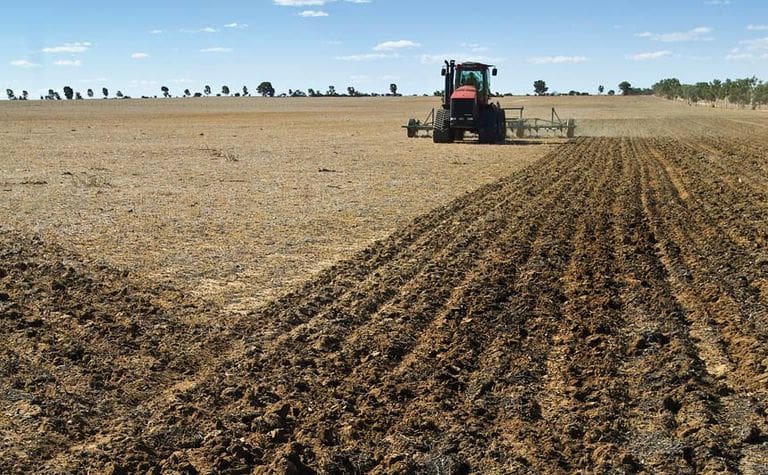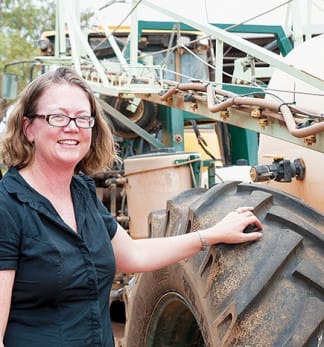
WA data shows deep ripping the right soil can pay off this season, despite fuel prices. Photo: GRDC
HIGH fuel prices are not necessarily a reason to hold off deep ripping, according to analysis by the Western Australia Department of Primary Industries and Regional Development (DPIRD).
DPIRD research scientist Bindi Isbister said with recent diesel price hikes and hard soils from a dry summer increasing draft and fuel use, many growers were asking whether it was still worth deep ripping.
“Despite the high cost of fuel, if you are deep ripping a soil type that typically has a good yield response then it is still economically worthwhile,” Ms Isbister said.
“For example, for good sandplain that has a 600 kilogram per hectare wheat yield response, deep ripping is worthwhile.
“Even at a fuel cost of $3 per litre, with a wheat price of $330 per tonne, the additional return from deep ripping is $28 per hectare in the first year.
“This was based on the estimated cost of deep ripping to 55 centimetres for labour, wages and depreciation of $62/ha and a fuel use of 90l/ha.

DPIRD research scientist Bindi Isbister
“The benefit of deep ripping commonly persists for at least three years, therefore, the cumulative three-year additional return is $183/ha with the ripping cost spread over that time.
“If a minimal yield response is anticipated, for example 400kg per hectare, and the optimal ripping costs are $132 per hectare at a fuel price of $2/l and wheat price of $330/t, then the cost of ripping is about the same as the returns from additional yield in the first year.
“In this case, a profitable response is dependent on the residual benefit of ripping in the second and third seasons, so it is higher risk for more limited return.”
Soil type determines depth
Ms Isbister analysed cereal grain yield responses to ripping at two different depths, 30-40cm and 55-60cm, incorporating data from historic and current DPIRD and Grains Research and Development Corporation trials.
“Due to limited summer rainfall in some regions, the soil is very dry and hard so it may not be possible to rip below the hard pan that typically extends to 60cm.
“Research has shown, particularly in low rainfall regions, if the hard pan is not removed completely due to shallow ripping, there can be a greater risk of the crop haying off early in a dry spring.
“So if you intend to do the job, do it properly and rip deep enough to remove the subsoil compaction layer, or wait for another opportunity.
“Some areas have received good rainfall over the last month and this provides an opportunity to effectively rip and remove those deeper hard pans, on responsive soil types.
“Many growers may be leaving more fallow this year due to the high cost of inputs, so this is a good opportunity to deep rip in spring when soil moisture is at an optimal level to achieve good ripping depth.”
Ms Isbister said where possible, growers should avoid ripping rocky areas that increased the risk of machinery breakages, especially if using the same tractor for seeding.
“It is worthwhile for growers to do their own sums, taking into account the expected soil type response and cost of ripping to the optimum depth.”
Source: WA DPIRD



HAVE YOUR SAY